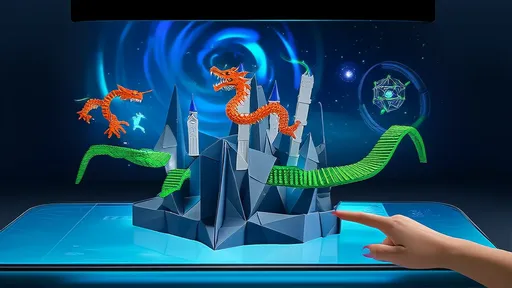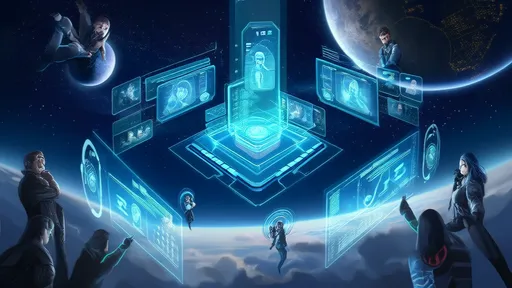The gaming landscape has undergone a seismic shift in recent years, with asynchronous multiplayer games emerging as a revolutionary force in how players connect across time zones. Unlike traditional real-time multiplayer experiences that demand simultaneous participation, these innovative titles allow gamers to collaborate or compete on their own schedules. This paradigm shift is redefining the very nature of online interaction in digital entertainment.
Asynchronous multiplayer games have quietly evolved from simple mobile gaming experiments to sophisticated platforms supporting complex player interactions. The technology underpinning these experiences enables actions taken by one player to seamlessly affect another's game world, even when they're separated by continents and time differences. Developers are increasingly leveraging cloud computing and sophisticated data synchronization to create persistent worlds that evolve around each player's unique schedule.
The social implications of this gaming format are profound. Working professionals in New York can contribute to shared projects with students in Tokyo, while night shift workers in London find common ground with early risers in Sydney. These temporal bridges are creating unexpected communities that transcend geographical boundaries in ways synchronous games never could. The result is a more inclusive gaming ecosystem where participation isn't gated by availability windows.
Game designers face unique challenges when crafting asynchronous experiences. Without the immediacy of real-time interaction, they must create compelling reasons for players to return to evolving game states. Many successful titles achieve this through progression systems that reward both individual contributions and collective achievements. The delayed gratification of seeing how others interacted with your input creates a novel form of engagement that's proving surprisingly addictive.
Popular asynchronous games often employ clever notification systems that alert players when their input is needed or when their previous actions have triggered consequences. These carefully timed prompts help maintain engagement without becoming intrusive. The psychological impact differs markedly from real-time games - players report feeling more thoughtful about their decisions when they know their choices will permanently affect others' experiences.
The business models supporting these games have also evolved. Many successful asynchronous titles utilize monetization strategies that complement the play-when-you-can mentality. Limited-time events are being replaced with persistent challenges that adapt to individual play patterns. Subscription services find particular success in this space, as they remove pressure to "get value" from brief play sessions.
Technical infrastructure for these games represents some of the most sophisticated in the industry. Maintaining consistent game states across thousands of individual sessions requires robust server architecture and intelligent data compression. The most advanced systems can now predict likely player actions to pre-render potential outcomes, dramatically reducing perceived latency when players do interact with each other's content.
Cultural differences in play patterns present both challenges and opportunities. Developers must account for varying approaches to collaboration across different regions. Some cultures favor direct competition even in asynchronous formats, while others prioritize collective problem-solving. The most successful games incorporate flexible systems that support multiple play styles within the same shared world.
The educational potential of asynchronous multiplayer games is only beginning to be explored. Language learning applications show particular promise, as players across the globe can contribute to shared projects at their own pace. Similarly, creative platforms allow artists in different time zones to collaborate on virtual installations that evolve organically over weeks or months.
Looking ahead, the integration of artificial intelligence promises to further revolutionize asynchronous gaming. AI could fill gaps in participation, ensuring that shared worlds remain dynamic even when human players are unavailable. More sophisticated matchmaking systems might connect players based on complementary play schedules rather than just skill levels or preferences.
The environmental impact of this gaming format deserves consideration. By eliminating the need for synchronized server loads, asynchronous games may represent a more sustainable approach to online entertainment. Energy consumption patterns become more manageable when player interactions are distributed across a 24-hour cycle rather than concentrated during peak hours.
As the technology matures, we're seeing the first examples of hybrid games that blend asynchronous and real-time elements. These innovative titles allow players to choose their preferred mode of interaction while maintaining a shared game state. This flexibility could represent the future of multiplayer design, accommodating diverse lifestyles while preserving the social magic of gaming.
The psychological benefits of asynchronous interaction are becoming increasingly apparent. Players report lower stress levels compared to real-time competitive games, while still enjoying meaningful social connections. The format particularly appeals to those who prefer contemplative gameplay or who have irregular schedules that make traditional multiplayer impractical.
From indie developers to major studios, the industry is taking notice of this quiet revolution. Investment in asynchronous multiplayer projects has increased dramatically, with publishers recognizing the untapped potential in this design space. As mobile devices become more powerful and cloud gaming infrastructure expands, the possibilities for innovative asynchronous experiences will only grow.
What began as a niche workaround for gamers in different time zones has blossomed into a transformative approach to digital interaction. Asynchronous multiplayer games aren't just changing how we play - they're redefining what online connection can mean in an increasingly globalized but time-poor world. The implications extend far beyond entertainment, hinting at new models for collaboration across all aspects of digital life.

By /Jul 3, 2025

By /Jul 3, 2025

By /Jul 3, 2025

By /Jul 3, 2025

By /Jul 3, 2025

By /Jul 3, 2025

By /Jul 3, 2025

By /Jul 3, 2025

By /Jul 3, 2025

By /Jul 3, 2025

By /Jul 3, 2025

By /Jul 3, 2025

By /Jul 3, 2025

By /Jul 3, 2025

By /Jul 3, 2025

By /Jul 3, 2025

By /Jul 3, 2025

By /Jul 3, 2025